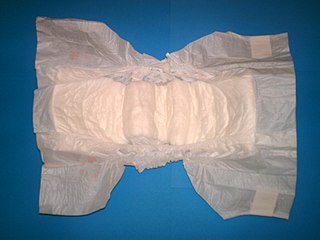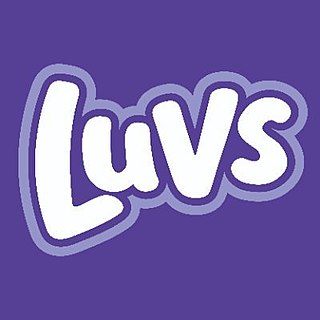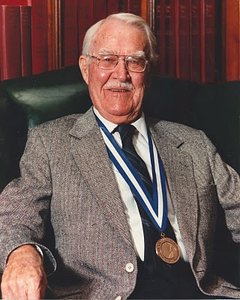 | |
 Pampers products | |
| Company type | Subsidiary |
|---|---|
| Founded | February 18, 1961 |
| Products | Diapers, training underwear, baby wipes |
| Owner | Procter & Gamble |
| Website | www |
Pampersis an American brand for babies and toddlers products marketed by Procter & Gamble.
 | |
 Pampers products | |
| Company type | Subsidiary |
|---|---|
| Founded | February 18, 1961 |
| Products | Diapers, training underwear, baby wipes |
| Owner | Procter & Gamble |
| Website | www |
Pampersis an American brand for babies and toddlers products marketed by Procter & Gamble.
In 1961, P&G researcher Victor Mills disliked changing the cloth diapers of his newborn grandchild. He assigned fellow researchers in P&G's Exploratory Division in Miami Valley, Ohio to look into making a better disposable diaper. They were created by researchers at P&G including Vic Mills and Norma Lueders Baker. The name "Pampers" was coined by Alfred Goldman, Creative Director at Benton & Bowles. [ citation needed ]
In 1982, P&G developed elasticized single and double gussets around the leg and waist areas to aid in fitting and in containing urine or stool which had not been absorbed. In fact, the first patent for the use of double gussets in a diaper was in 1973 by P&G. [1] In 1982, Pampers introduced an elasticized wingfold diaper with elastic leg gathers and refastenable tapes which was a cross between the early 1960s design and the modern hourglass shape, a feature that was first introduced on Luvs in 1976 and evolved into an industry standard in 1985. [ citation needed ]
In 1986, thin diapers made with absorbent gelling material were released. This made the average weight of a typical medium size diaper decrease by 50%. [2]
In 1987, Pampers and Huggies both introduced frontal tape systems which allow repositioning of the lateral tape without tearing the diaper.[ citation needed ]
In the 1990s Pampers introduced a thinner diaper known as Ultra Dry Thins.[ citation needed ] The early 1990s also saw the introduction of gender-specific diapers in the Pampers brand; the product returned to unisex diapers towards the end of the decade.[ citation needed ]
In 1993, Pampers introduced training underwear, but the Pampers Trainers were a short lived product. Pampers did not sell training underwear again until the introduction of Easy Ups. [3]
In 1996, P&G acquired Baby Fresh wipes from Kimberly-Clark; Kimberly-Clark had recently acquired Baby Fresh owner Scott Paper Company and was ordered to sell the wipes business. [4]
In 1998, Procter & Gamble introduced its largest diaper at the time, Pampers Baby-Dry Size 6. It was promoted in an advertising campaign featuring pediatrician and child development expert Dr. T. Berry Brazelton, who said to let the child decide when the time is right to potty train. The size 6 diapers were billed for growing toddlers. Huggies also introduced a size 6 diaper at this time. [5]
In 2018 the company launched its newest diaper line called Pampers Pure [6] which was designed without chlorine bleaching, fragrance, lotion, parabens, natural rubber latex and 26 allergens identified by the European Union. [7] The wipes launched with the new collection contain 99% water and premium cotton. Pampers announced that the goal was to give parents an option for an affordable natural diaper brand. [8]
In March 2010, Pampers announced a change to their popular Cruisers and Swaddlers diapers (Active Fit and New Baby respectively in Europe) with the addition of the new Dry-Max technology. Many parents reported [9] rashes and chemical burns as a result of using the new diapers. Procter & Gamble claim that pediatric experts have reviewed the Pampers with DryMax safety data and have seen no correlation between the reported rash and diaper. [10] In May 2010, a lawsuit was filed against Procter & Gamble based on the injuries allegedly caused by the diapers. [11] In September 2010, the United States Consumer Product Safety Commission issued the results of its investigation into the matter, finding no evidence that these diapers cause diaper rash. [12] In the UK the case was brought to people's attention on consumer rights programme Watchdog in May 2010.
Pampers is marketed in various ways, such as print ads and television commercials. Print ads often appear in magazines and other periodicals. Television commercials appear during soap operas co-produced by Procter and Gamble, such as Bold and the Beautiful & Young and the Restless , and during the airing of parenting shows. Another way Pampers is promoted is through product placement. Pampers paid $50,000 to be featured in the film Three Men and a Baby .[ citation needed ] P&G has also sponsored the program Make Room for Baby on the Discovery Health Channel.
P&G contributes to flood relief efforts in Pakistan in part through its Pampers brand and "Spread a Smile" campaign, which provides free health check-ups, medicines, and oral rehydration therapy to babies and children living in the flood affected areas. [13]

A diaper or a nappy is a type of underwear that allows the wearer to urinate or defecate without using a toilet, by absorbing or containing waste products to prevent soiling of outer clothing or the external environment. When diapers become wet or soiled, they require changing, generally by a second person such as a parent or caregiver. Failure to change a diaper on a sufficiently regular basis can result in skin problems around the area covered by the diaper.
Elimination communication (EC) is a practice in which a caregiver uses timing, signals, cues, and intuition to address an infant's need to eliminate waste. Caregivers try to recognize and respond to babies' bodily needs and enable them to urinate and defecate in an appropriate place. Caregivers may use diapers (nappies) as a back-up in case of "misses" some or all of the time, or not at all. EC emphasizes communication between the caregiver and child, helping them both become more attuned to the child's innate rhythms and control of urination and defecation. The term "elimination communication" was inspired by traditional practices of diaperless baby care in less industrialized countries and hunter-gatherer cultures. Some practitioners of EC begin soon after birth, the optimum window being zero to four months in terms of helping the baby get in tune with their elimination needs, although it can be started with babies of any age. The practice can be done full-time, part-time, or just occasionally.

Kimberly-Clark Corporation is an American multinational personal care corporation that produces mostly paper-based consumer products. The company manufactures sanitary paper products and surgical & medical instruments. Kimberly-Clark brand name products include Kleenex facial tissue, Kotex feminine hygiene products, Cottonelle, Scott and Andrex toilet paper, Wypall utility wipes, KimWipes scientific cleaning wipes and Huggies disposable diapers and baby wipes.

Huggies is an American company that sells disposable diapers and baby wipes that is marketed by Kimberly-Clark. Huggies were first test marketed in 1968, then introduced to the public in 1977 to replace the Kimbies brand.
Pull-Ups is a brand of disposable diapers made under the Huggies brand of baby products. The product was first introduced in 1989 and became popular with the slogan "I'm a big kid now!" The training pants are marketed with purple packaging: boys' designs are blue and currently feature characters from the Disney Junior show Mickey Mouse Funhouse; girls' designs are purple with the Disney Junior show Minnie's Bow-Toons characters.

A wet wipe, also known as a wet towel, moist towelette, disposable wipe, disinfecting wipe, or a baby wipe is a small to medium-sized moistened piece of plastic or cloth that either comes folded and individually wrapped for convenience or, in the case of dispensers, as a large roll with individual wipes that can be torn off. Wet wipes are used for cleaning purposes like personal hygiene and household cleaning; each is a separate product depending on the chemicals added and medical or office cleaning wipes are not intended for skin hygiene.

Goodnites are diapers designed for managing bedwetting. Goodnites are produced by Kimberly-Clark. The product has also been seen titled as Huggies Goodnites on official Huggies branded webpages.

Training pants are undergarments used by incontinent people, typically toddlers, as an aid for toilet training. They are intended to be worn in between the transition between wearing diapers but before they are ready to wear regular underpants. Training pants may be reusable and made of fabric, or they may be disposable. In the US, disposable training pants may also be referred to as "pull-ups", and in the UK, training pants are frequently referred to as nappy pants or trainer pants. The main benefit of training pants over diapers is that unlike traditional diapers, they can be easily pulled down in order to sit on a potty or toilet, and pulled back up for re-use after the person has used the toilet. The main benefit of wearing training pants over regular underpants is that if the person has an accident, they do not soil their environment.

Luvs is a brand of disposable diapers made by Procter & Gamble. Luvs were sold as "Deluxe" diapers in the late 1980s. In 1994 they became budget diapers. The Luvs brand also includes baby wipes.

P&G Korea is a South Korean consumer goods company headquartered in Yeoksam-dong, Gangnam-gu, Seoul, South Korea. It is a subsidiary of American multinational consumer goods company Procter & Gamble.
Frank Carlyle Harmon was an American former head of fabrics research for Johnson and Johnson. He is best known for his patent, held jointly with Billy Gene Harper of Dow Chemical, that made the possible the production of modern "superabsorbent" disposable diapers.

Victor Mills was an American chemical engineer for the Procter & Gamble company. He is most credited for the creation of modern disposable diapers and the Pampers brand, production improvements for Ivory soap and Duncan Hines cake mix, and the production concept for Pringles. Within P&G he is regarded as the most productive technologist in the company's history. Therefore, when the company formed an honorary society for their engineers, it was named the Victor Mills Society.

A swim diaper or swim nappy is a diaper that is made for those who have fecal incontinence, which is worn underneath a bathing suit, or as a bathing suit. Swim diapers can be reusable and disposable. They are not intended to be absorbent, but only to contain solid waste (feces); the lack of absorbency prevents the swim diaper from swelling with water.

The Procter & Gamble Company (P&G) is an American multinational consumer goods corporation headquartered in Cincinnati, Ohio, founded in 1837 by William Procter and James Gamble. It specializes in a wide range of personal health/consumer health, personal care and hygiene products; these products are organized into several segments including beauty; grooming; health care; fabric and home care; and baby, feminine, and family care. Before the sale of Pringles to Kellogg's, its product portfolio also included food, snacks, and beverages. P&G is incorporated in Ohio.

Marion O'Brien Donovan was an American inventor and entrepreneur. Recognized as one of the era's most prominent female inventors, she secured a total of 20 patents for her creations. In 1946, she created a reusable, impermeable diaper cover. Ultimately, this led to the invention of the disposable paper diaper, which was eventually commercialized by Victor Mills, the creator of Pampers. Donovan also innovated various solutions around the home and was inducted into the National Inventors Hall of Fame in 2015..

Open-crotch pants, also known as open-crotch trousers or split pants, are worn by toddlers throughout mainland China. Often made of thick fabric, they are designed with either an unsewn seam over the buttocks and crotch or a hole over the central buttocks. Both allow children to urinate and defecate without the pants being lowered. The child simply squats, or is held by the parent, eliminating the need for diapers. The sight of the partially exposed buttocks of kaidangku-clad children in public places frequently astonishes foreign visitors, who often photograph them. They have been described as being "as much a sign of China as Chairman Mao's portrait looming over Tiananmen Square."
A wetness indicator is a common feature in many disposable diapers and toilet training pants. It is a feature that reacts to exposure of liquid as a way to discourage the wearer to urinate in the training pants, or as an indicator to a caregiver that a diaper needs changing.
Depend is a brand of absorbent, disposable underwear and undergarments for people with urinary or fecal incontinence. It is a Kimberly-Clark brand, and positions its products as an alternative to typical adult diapers. Depend is the dominant brand of disposable incontinence garments in the United States with a 49.4 share of the market.
Deborah Ann "Deb" Henretta is an American businesswoman. She is a senior adviser for General Assembly, a global education and technology company, as well as SSA & Company, a New York-based management consulting firm. Prior to her current position, she retired in 2015 from a 30-year career at Procter & Gamble, culminating in becoming one of only two top-level women executives for the consumer goods organization.